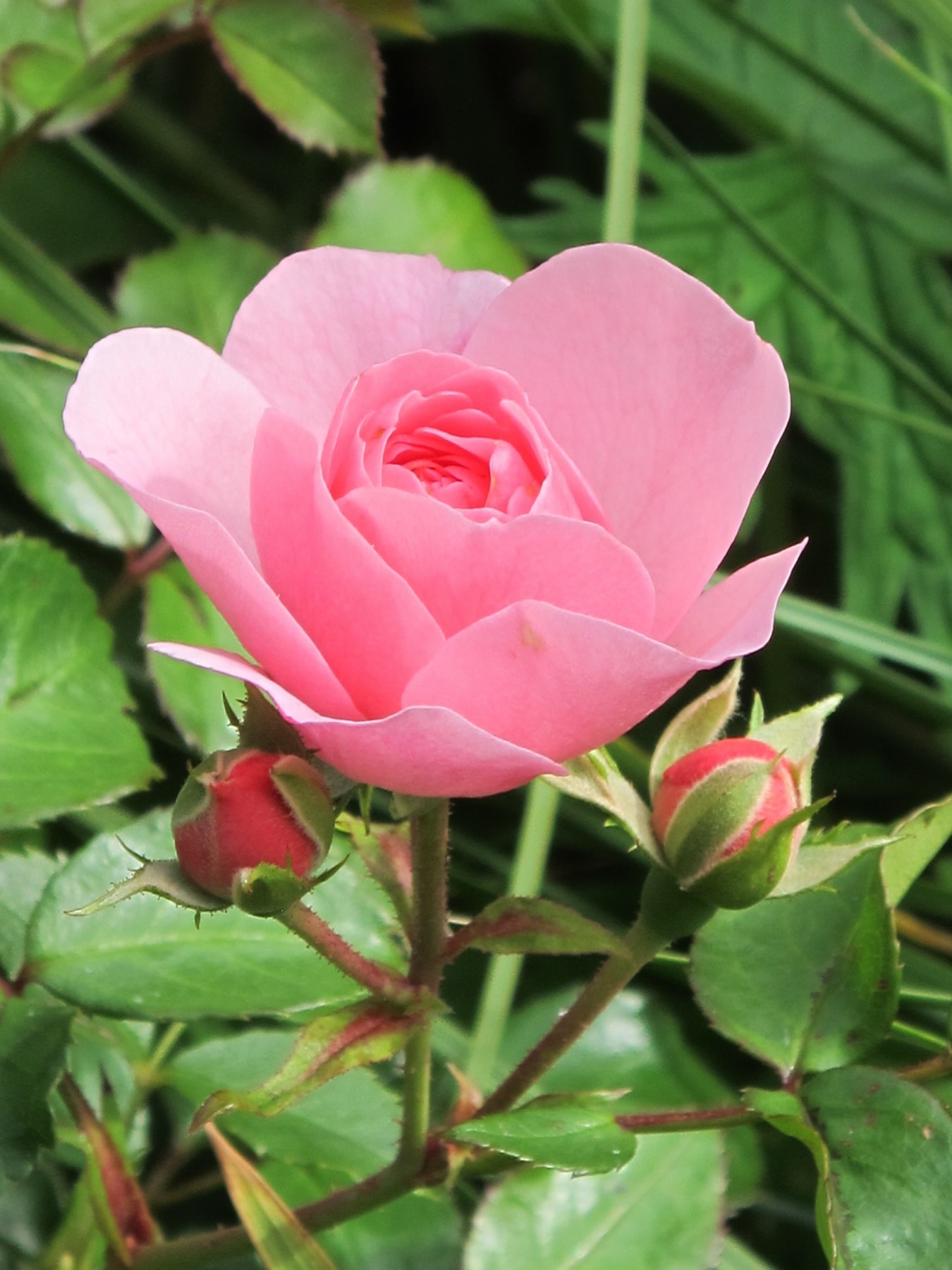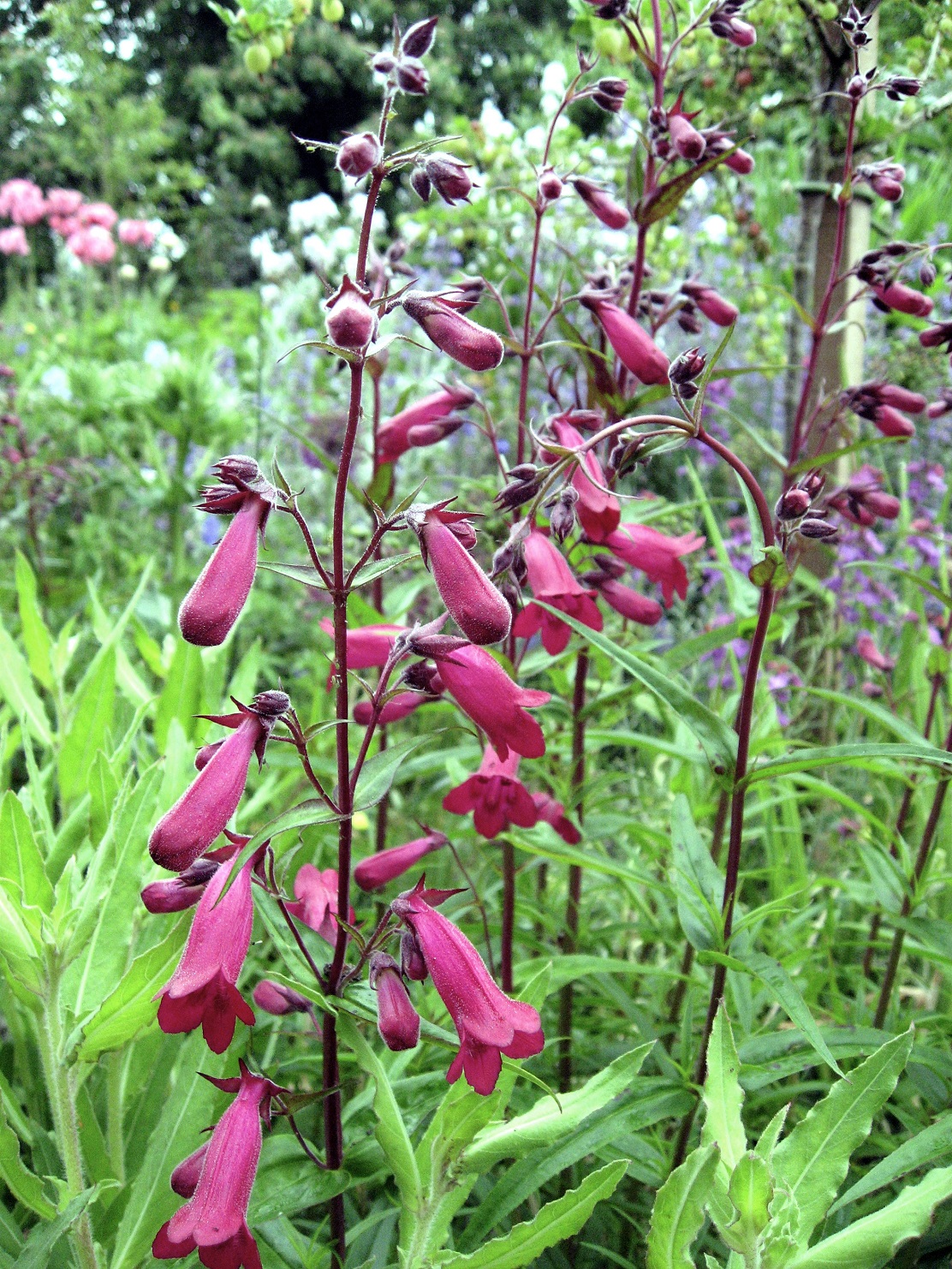
I can’t quite believe that I’ve been at Spring Cottage for twelve years. It took me five years to get to the stage when I felt happy with the garden, but now I’ve realised that I’ve got to start again in some areas because some plants are definitely past their best. I’m not a garden designer, I’m a mere plantswoman, so I feel slightly nervous. However autumn is a good time to start and start I will.
Designers see things differently from plants people and I remember when I moved here, to a sloping site that dips down to the spring by the road. A well-known garden designer came to lunch and told me I had to get a digger in to flatten it. I nodded sagely, whilst making a mental note to work with the slope. I have low stone walls that give me a wonderful view over the fields beyond and, if I’d flattened my plot I would have ended up with taller walls and no view. I don’t approve of moving to a village and installing high walls and fancy gates with press button codes.
Years ago I heard Dickie Bird, the cricket umpire, recount and experience when he was asked to visit Geoff Boycott’s house for lunch. He couldn’t get past the security and finally gave up. So near and yet so far. The slope works very well here because it tends to foreshorten the planting in any beds that follow the line of the slope. It makes the planting look denser.
I’m much wiser about my planting than I was. Years ago I would buy one of everything and dot plant it and I ended up with a busy pincushion. I’ve learnt the value of planting fewer things in greater numbers and I’ve also learnt that if you find a good combination you should repeat it so that you get continuity when you look up or down a border. I’ve also learnt that the best borders peak at a certain time of year, although you can extend the planting. The four-season border simply doesn’t work because you end up with a fading peony in September rubbing shoulders with an autumn-flowering plant at its peak. The two jar.
It’s amazing to watch how people tackle planting and I’m going back a few years now to the Royal National Rose Society’s garden close to St Albans. The ironwork was provided and the roses were planted as bare root specimens and then the fillers arrived in late spring. For economy’s sake plants were bought in bulk from wholesale nursery and divvied up between the flowerbeds. Several individuals, using the same plants, got to work and you’d think the flowerbeds would all end up looking the same.
However some volunteers planted up blocks of the same plant, whilst others created ribbons or slightly wavy topped triangles. The block planters made blobs and none of the plants looked integrated. Others wove their plants very successfully. Some were really clever and used a group of five, seven or even nine and placed just one plant slightly further away to extend the eye. This looked very natural.
Before you can do any of that, you have to clear the plot and that’s going to be my job. I need to remove anything that’s got tired and I’ve got some huge Stipa gigantea that aren’t cutting the mustard any longer. I’ve found them difficult in this garden because the soil stays damp due to the underground spring. They take up a massive amount of room and tend to smother other. Stipas are short-lived and impossible to divide so these will be added to the compost heap. I’ll also be dumping some hardy geraniums that are rather too good at producing seedings. There is a tall pink phlox, bought as ‘Utopia’ although it isn’t, and that can come up and may be saved and replanted elsewhere.
I’m trying to create a border that keeps going without getting shabby late in the year. The background planting consists of pink roses, principally ‘Bonica’, planted several years ago and I will retain these. This French-bred rose succeeds on poor soil and many rose enthusiasts put it in their top ten. It’s hardly ever out of flower and produces clusters of twenty or so candy-pink. semi-double flowers.
I’m going to continue the pink rose theme and I’ve been very taken with a new David Austin Rose called ‘The Mill on the Floss’. David Austin describes this having “neat, deeply cupped blooms, each eventually revealing a small boss of stamens.” It opens mid-pink, verging on lilac-pink, and the flowers fade as they open. The petals have “beautifully defined carmine edges. It makes a bushy shrub, clothed in glossy foliage, and should reach 4.5ft in height. It does seem to be very healthy and I’ll probably prune it quite hard, to keep the height down.

A swathe of pale to mid-pink roses could look anaemic in its own, so I’m adding some touches of stronger colour, using the dusky foliage of and poink-red flowers of a sedum called ‘Purple Emperor’ and a wine-red penstemon that used to called ‘Garnet’ . It’s reverted to its old name, ‘Andenken an Friedrich Hahn’. This 1930s, Swiss-bred penstemon is a prolific producer of flower and the foliage is narrow. More importantly it’s very hardy. I also use a neat origanum called ‘Herrenhausen’ for its two-tone pink and purple sprays of flower. All three are good nectar plants for insects.
The perfect colour to set off purple and wine coloured flowers is silver but silver foliage is difficult here because we don’t have dry enough soil to make silvers sparkle. I’ve opted to grow a large-leaved culinary salvia called Salvia officinalis ‘Berggarten’. This large culinary sage looks magnificent in winter because the thick, felted foliage resists winter well.
The perfect antidote to all that purple and silver is blue and I seem to be able to keep an upright catmint, called Nepeta grandiflora ‘Bramdean’, even in cold winters. This doesn’t flop everywhere, unlike ‘Six Hills Giant’ which I’ve had to dig up and stop growing. My final touch of blue will be provided by several herbaceous clematis. These are scented and they flower in August and September for a period of weeks. Their curled petals allow bees and butterflies to feed. They are not completely upright, but neither are they floppy. So they look very relaxed leaning slightly in a border. C. heracleifolia ‘Cassandra’ has the darkest blue flowers of all, but I also grow ‘Roundway Bluebird’. This was found as a seedling in the Devizes garden of John Philips and the Roundway prefix indicates a good plant. I’ve just picked up another herbaceous clematis called ‘Chris’, with violet-blue flowers.
There is a wild card. I’ve got some orange-yellow crocosmias that flower late. ‘Bright Eyes’ has brown centred flowers. ‘Golden Ballerina’, which was bred by Southampton based plant breeder Ken Rigney, has large, downward-facing golden-orange flowers with narrow petals. ‘Golden Ballerina’ came from Hardy’s Cottage Garden Plants. They may be one brush stroke too many! We shall see.



